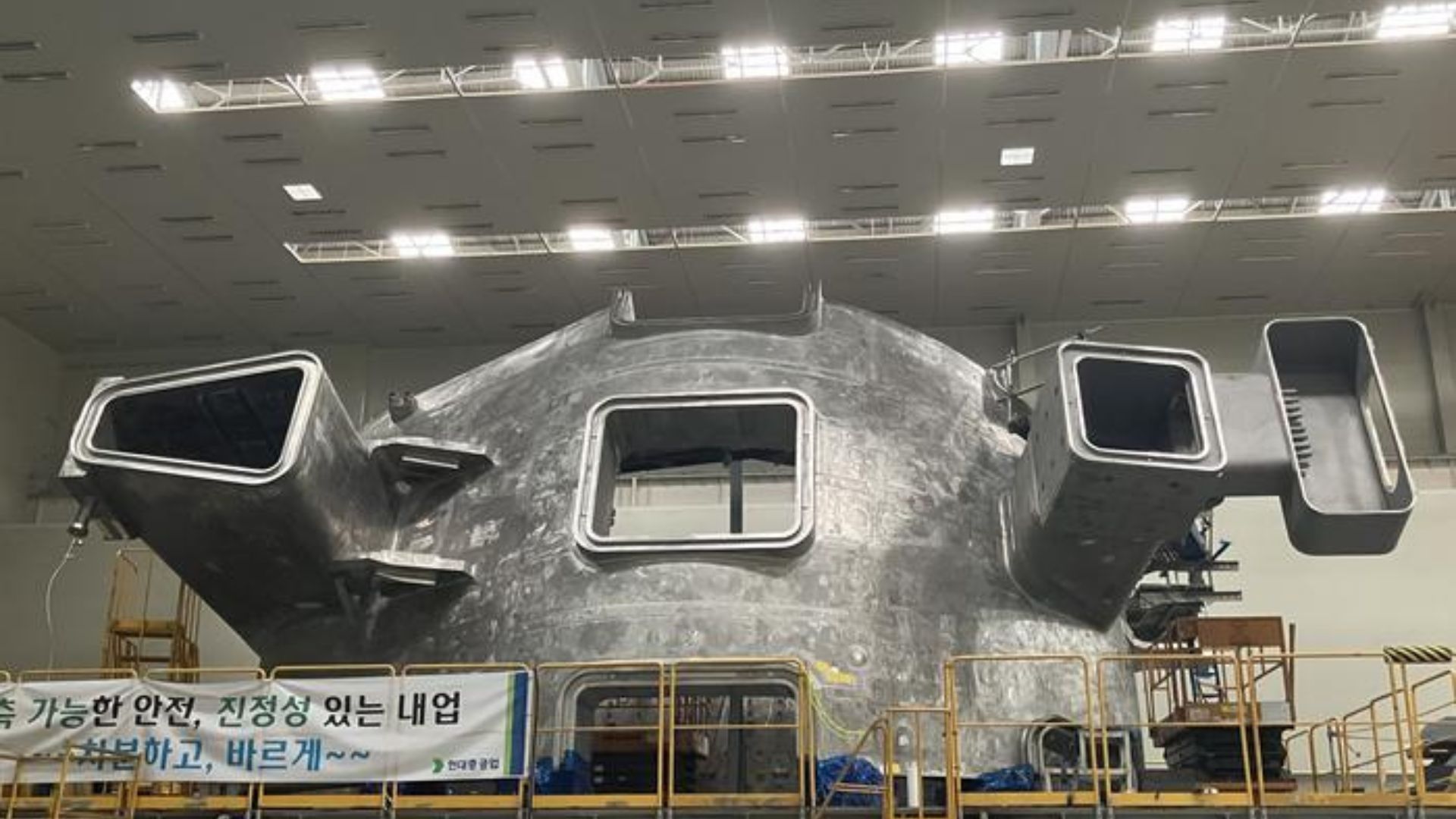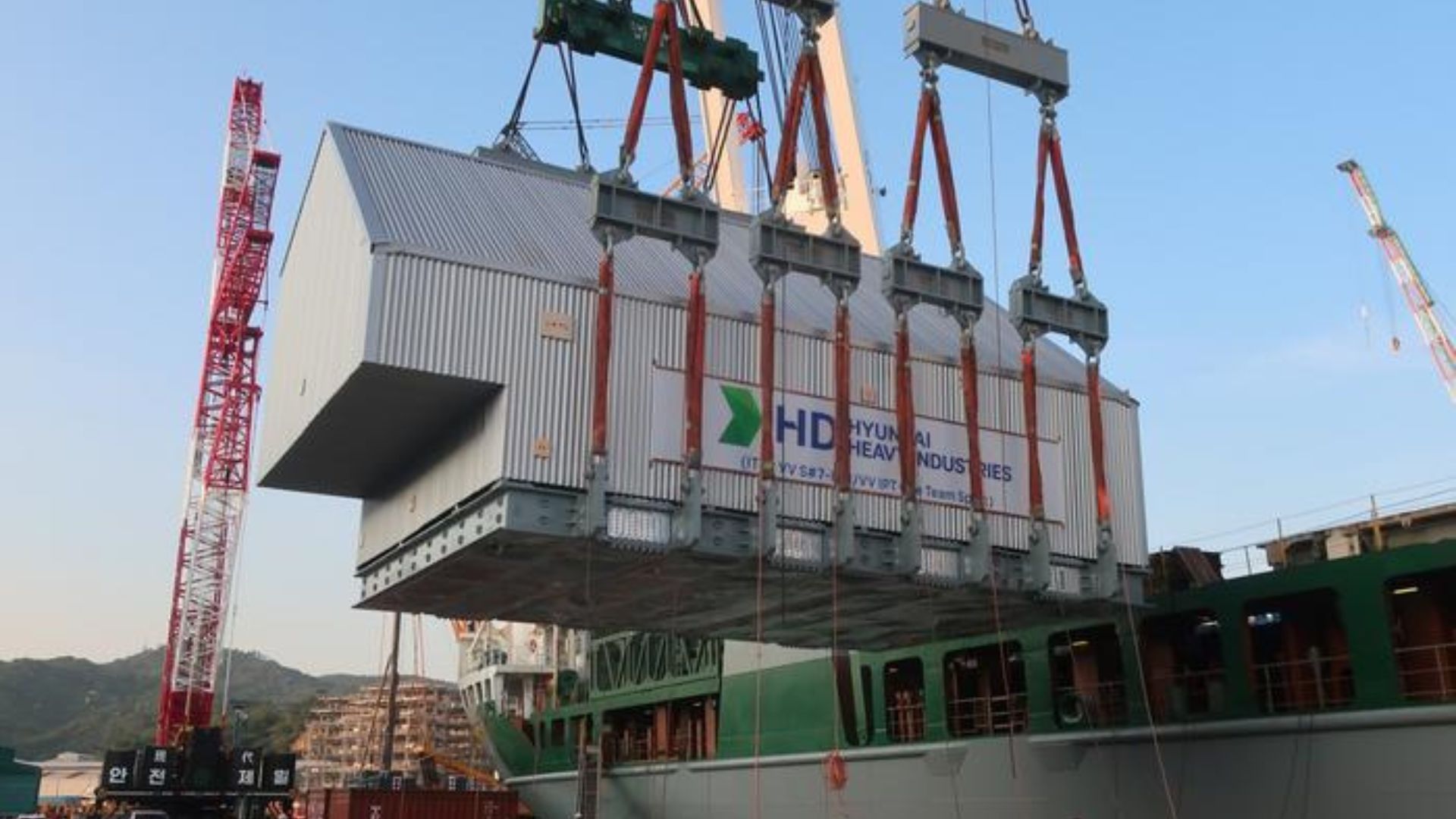France gets 5,000-ton nuclear reactor parts to power world’s largest fusion plant
The ITER vacuum vessel has nine sectors and 44 ports for diagnostics, remote handling, heating, and fuelling.Updated: Nov 22, 2024 07:05 AM EST
Jijo Malayil
11 hours ago
0
Share

The ITER vacuum vessel sustains ultra-high-temperature plasma for nuclear fusion by maintaining a high vacuum.
Korea Institute of Fusion Energy
Vacuum vessel sectors for the world’s largest fusion project, made in South Korea, have been delivered to the construction site in Cadarache, France.
Four of the nine vacuum vessel sectors for the International Thermonuclear Experimental Reactor (ITER) were built in South Korea by Hyundai Heavy Industries at its large shipyard in Ulsan.
Vacuum vessels will improve radiation shielding and plasma stability by providing a high vacuum environment for the plasma. The fusion reactions will be housed in the vessel, which will also offer access to remote handling procedures.
South Korea was originally assigned two ITER vacuum vessel sectors but took on two more in 2016, increasing its responsibility to four.
0 seconds of 30 secondsVolume 0%
Precision welding mastery
The ITER vacuum vessel plays a crucial role in nuclear fusion, creating the high-vacuum environment needed to sustain ultra-high-temperature plasma.
Weighing 5,000 tons, this massive structure is composed of nine sectors and features 44 ports for key functions like diagnostics, remote handling, heating, and fuelling. With an interior volume of 1,400 m³, the vessel offers a unique experimental arena for advancing fusion research.
 Completed assembly of the ITER Vacuum vessel sector.
Completed assembly of the ITER Vacuum vessel sector.Constructed in four segments per sector, the assembly process involves over 1 mile (1.6 kilometers) of precision welding. Maintaining tolerances within a few millimeters is essential to ensure the proper integration of internal components, reflecting the advanced fabrication and engineering required for such a complex structure. Its double steel walls are equipped with circulating cooling water to dissipate heat generated during operations efficiently.
The vessel’s interior is lined with actively cooled blanket modules, providing shielding from high-energy neutrons produced by fusion reactions. Some modules will also support future studies by testing materials for tritium breeding concepts, a step vital for sustaining fusion power.
According to the National Research Council of Science and Technology, by facilitating plasma confinement in a high-energy regime, the ITER vacuum vessel represents a landmark achievement in fusion technology, pushing the boundaries of sustainable energy development.
Thermal shielding breakthrough
The first vacuum vessel sector for ITER was delivered to ITER in August 2020 after it was taken off the assembly line in April 2020. The final sector sailed on August 24, 2024, and it went through the ITER gates after circumnavigating the Cape of Good Hope at the southern tip of Africa and continuing north to the Strait of Gibraltar and into the Mediterranean.
RECOMMENDED ARTICLES
Our business lodgement dates are here!Australia Post
Work started on the first of the four enormous components in October 2012. Two six-meter steel slabs that were 60 millimeters thick were shaped using high-pressure water jet cutting.
 The shipping process of the ITER vacuum vessel sector.
The shipping process of the ITER vacuum vessel sector.The press forming was followed by heat treatment to relieve internal metal tension, machining, welding, drilling (hundreds of holes, at 11 hours per hole), and finally assembling and welding the four segments and set of ports that make up the finalized vacuum vessel sector.
ITER noted that two layers of thermal shielding are placed between the vacuum vessel and cryostat to reduce heat transfer from warm components to those operating at 4.5K, like the magnets. This setup decreases heat loads by over two orders of magnitude, ensuring the cryoplant can manage the residual heat with a practical capacity.
0COMMENT
NEWSLETTER
The Blueprint Daily
Stay up-to-date on engineering, tech, space, and science news with The Blueprint.
Mail Me
By clicking sign up, you confirm that you accept this site's Terms of Use and Privacy Policy
ABOUT THE EDITOR
Jijo Malayil Jijo is an automotive and business journalist based in India. Armed with a BA in History (Honors) from St. Stephen's College, Delhi University, and a PG diploma in Journalism from the Indian Institute of Mass Communication, Delhi, he has worked for news agencies, national newspapers, and automotive magazines. In his spare time, he likes to go off-roading, engage in political discourse, travel, and teach languages.
